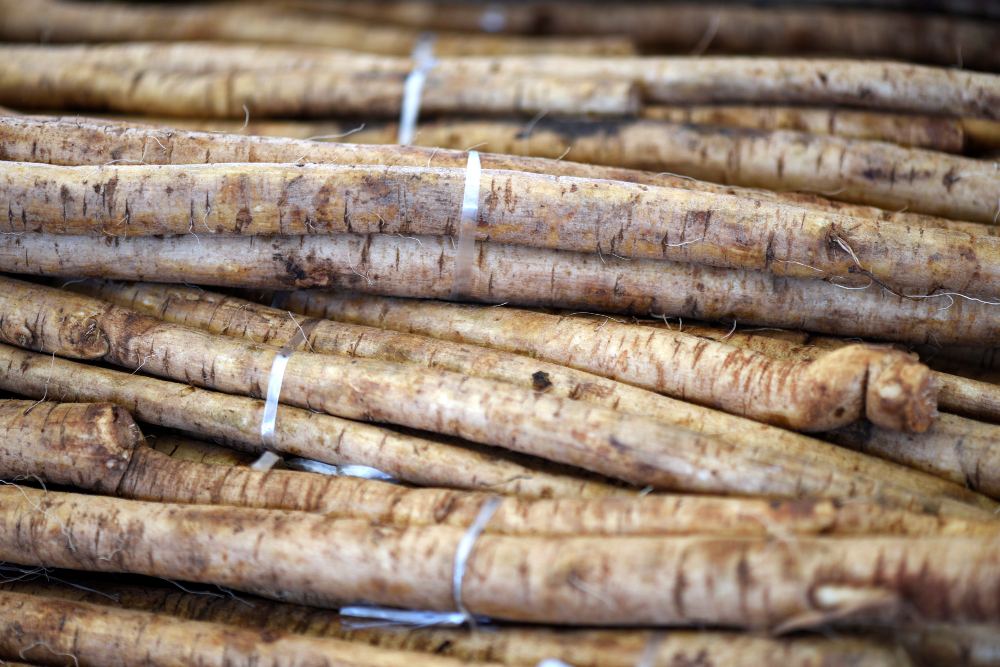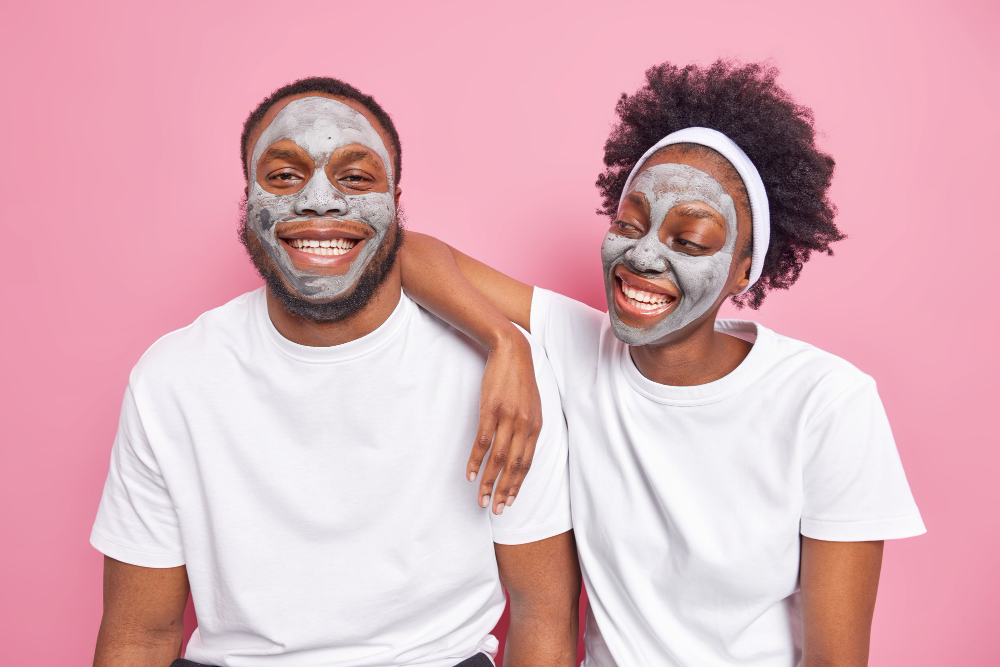October 2021 Edition
What’s New
Acne is the most common skin condition in the United States, affecting up to 50 million Americans annually.
The Acne Remedy: From Diet to Skincare Routine

Ranging from minor flare-ups to significant inflammation, acne is a condition that varies in appearance and severity, primarily appearing on the face, chest, and back. Many teenagers struggle with acne and it can linger well into adulthood. Whether acne is mild or severe, the best approach to treatment is individualized, utilizing natural and safe therapies from a qualified holistic health practitioner. Let’s take a closer look at the factors that play a role in the development of acne and holistic “from the inside out” approaches commonly used to heal acne.
What Does Acne Look Like?
The appearance of acne can vary from person to person and where it appears on the body.
- Scaly red skin (seborrhea)
- Pinheads (papules)
- Blackheads/whiteheads
- Nodules or cysts
- Rash-like clusters
Scarring can result from acne that is inflamed, picked-at, or not properly treated. The results can be emotionally crushing for both teens and adults. Consequently, over $100 million dollars annually is spent on non-prescription treatments for acne.
How Acne Develops
Problems can begin at any age and there is no reliable method to estimate how long it takes to clear up. When acne arises, it’s due to changes in the skin structures deep below the surface including hair follicles and sebaceous glands (oil-producing). Development of acne is often multifaceted including factors such as:
- Family history
- Hormonal Changes
- Stress level
- Exposure to toxins or irritants
- Nutrition
- Abrasive cleansing products
- Use of cosmetics containing allergens, irritants, and chemicals
Of these factors, nutrition exerts the strongest influence over the prevention and healing of acne. The nourishment we give our bodies fuels many processes that affect the organs of detoxification. Specifically, the liver and the skin (integumentary system) help keep the surface of the skin glowing.
7 Simple Dietary Habits to Support Healthy Skin
- Hydrate! Drink plenty of water throughout the day. Healthcare recommendations vary from 6-8 glasses of water a day, to drinking at least one-half your body weight (in pounds) in ounces. Talk with your holistic practitioner about what’s right for you, based on your health and lifestyle, including diet, exercise, occupation, climate, supplements and other therapies.
- Avoid sugar-laden drinks and reduce caffeine intake. The theory is that caffeine invokes the stress response (it elevates HR, BP, cortisol,etc.), and circulating stress hormones contribute to acne. Overconsumption of caffeine may trigger and worsen existing acne.
- Eat fresh, raw fruits and vegetables, nuts, and seeds– opt for nutrient-dense foods.
- Avoid hydrogenated /partially hydrogenated oils/fats such as those found in processed food.
- Take nutritional supplements to support the skin (e.g., zinc, vitamin D/ E/ A).
- Take a probiotic to support gut health (another detox pathway).
- Take Essential Fatty Acids, which are important to skin health.
Holistic Skin Care Tips
- Avoid harsh cleansing products such as astringents. These initially feel refreshing, but their potency actually dries out the skin, signaling the glands to produce more oil.
- Utilize plant-based (botanical) cleansers that contain herbs and floral components that are gentle and effective for nourishing and cleansing the skin. Some common botanical ingredients are calendula, chamomile, cucumber, citrus, rose, Manuka honey, tea tree, witch hazel, among many others. Avoid cleansers that contain any plant to which you have an allergy or sensitivity.
- Explore Phytotherapy (the medical use of plant extracts), which can include a variety of botanicals that are used topically or taken in a tincture or capsule, depending upon the severity of the acne.
- Wash daily with lukewarm water and a gentle soap such as one made from goat’s milk, olive oil, or coconut oil. Follow with a cool rinse.
- Use a soft clean washcloth or a soft, natural sponge (change monthly to avoid build-up of bacteria).
- Use a toner when you are not able to wash your face midday or after exercising (look for a mild herbal-based product). Saturate a small face sponge or cotton ball and apply in smooth strokes across the skin to remove sweat, oil and dirt.
- Apply moisturizer daily.
- Change pillow covers.
Finally, to soothe flare-ups, nourish the skin with herbal salves and essential oil compresses to suit individual needs. To discover what phytotherapy-based cleansing routine, nutritional supplements, and dietary changes would best support your skin’s needs, consult with a holistic health practitioner.
Raw Foods for Healthy Skin

Many raw foods are safe and especially good for nourishing the skin. Raw food provides the body with substantial amounts of fiber, minerals, vitamins, and essential fatty acids (EFAs). All of these are important for hydrating the skin, maintaining its underlying structure (collagen and elastin), and supporting the vascular system that brings nutrients to, and carries toxins away from, the skin.
What is Raw Food?
Although there is some debate, raw foods typically include any food that remains in an unprocessed whole form, which has not been heated 104–118°F (40–48°C) and is not pasteurized. The temperature indication is significant because crucial natural enzymes important for digestion and nutrient absorption can be destroyed above 118°F (47°C) (depending on the food). Additionally, the theory behind consuming raw food is that it provides your body with the optimal nutrient density–very little is lost to processing, packaging, cooking and storage.
Many types of raw foods can be combined to create delicious snacks and meals that are ideal for nourishing your skin, including:
- Nuts and seeds, including raw nut butters
- Fruits and vegetables (e.g., avocado, banana, oranges, berries, kale, spinach, other dark greens)
- Freshly made juices (fruit or vegetable)
- Soaked/sprouted beans, legumes and grains
- Dried fruits and vegetables
- Fermented foods such as kimchi
- Seaweed
Here are some of the many key nutrients that raw foods provide to the skin:
Antioxidants. At a cellular level, antioxidants help your body process damage and slow down cellular aging. Many dermatologists recommend diets that are rich in the major antioxidants, vitamins, A, C, and E, to keep your skin wrinkle-free. Antioxidants are abundant in fruits, especially citrus fruits, cantaloupe, berries, and veggies such as bell peppers and spinach.
Essential Fatty Acids. The Omega-3 and Omega-6 Fatty Acids are important for keeping your skin smooth. Without fat, vitamins, A, D, E, and K are not readily absorbed; this can create a chain reaction of nutrient insufficiency that affects the skin. EFAs also help reduce inflammation. EFAs are obtained through foods such as avocado, fish, olives and flaxseed.
Fiber. Fiber supports movement in the GI tract, in turn helping your body remove toxins and keeping your skin healthy. People who suffer from skin problems may also be suffering from constipation. This build-up in the gut impacts many systems in the body, and that can show up in distressed skin.
Your holistic health practitioner can guide you about the best way to integrate raw foods into your current diet, or identify another nutritional approach that is suitable to your health needs.
Glowing Skin Smoothie

We all know that beauty begins from within…and that starts with the nourishment we give our bodies. Start your morning with a delicious Glowing Skin smoothie. A rich, creamy and sweet blend of avocado, banana, mango, and pineapple in a coconut water base provides ample hydration and Vitamin C (essential for producing collagen, a protein that helps maintain skin tone and plumpness). Mix in spinach and/or kale to your liking for that superfood finishing touch.
Ingredients
- 1/2 cup plain coconut water (or more as needed)
- 2 frozen bananas (previously peeled and sliced)
- 1 cup chopped pineapple (frozen or fresh)
- 1 cup chopped mango (frozen or fresh)
- 2 cups spinach or kale
- 1/2 avocado, sliced
Preparation
- Make sure you have a strong, powerful blender such as a Ninja or Vitamix.
- Add all of the ingredients to the blender in the order listed.
- Blend on high for at least 3 minutes or until smooth.
- Add more coconut water if needed to thin out. Scrape down the sides of the blender as needed.
Alternatives
Coconut Water: If you don’t have or care for coconut water, use cashew milk (it’s thicker than almond milk) or another milk substitute. You can also use water or an organic juice, but this will change the consistency.
Substitutions: You can use different fruits, such as strawberries and peach, in place of the mango or banana. Again, this will change the consistency so be mindful of that as well as the different nutrient profiles of other fruits. You will want to choose fruits high in vitamin C.
Help Keep Your Skin in Balance with Burdock Root

Burdock root, seeds, and leaves are recognized for their anti-inflammatory and antioxidant effects. The herb also has been used to protect liver cells from damage and to help purify the blood. The medicinal effects of Burdock root (Arctium lappa) on the organs of detoxification (liver, gut, and skin) makes it an excellent choice to support healthy skin.
Grown in Asia, Europe and North America, Burdock root is abundant in antioxidants and has been used for centuries as a botanical medicine. It helps protect the skin from damage that can result from UV exposure (sunbathing), tobacco, and exposure to other environmental toxins. Research has shown that antioxidants have powerful effects on the cellular processes involved with aging.
Skin conditions that could benefit from a treatment protocol that contains Burdock root include acne and eczema. Burdock root may be used orally or as a tincture or balm to be applied to the skin’s surface. As Burdock also has anti-inflammatory and antibacterial properties, It can reduce redness and swelling that is common to many types of skin conditions and flare-ups. Please consult with your holistic health provider before you use any Burdock formulation.
Probiotics, Gut Health and Glowing Skin

Did you know there’s a close relationship between the health of your gut and the health of your skin? There are many different microorganisms, including bacteria, that reside in the gut and which are often simply referred to as “flora”. Balanced gastrointestinal (GI) flora provides support for the immune system, nutrient absorption, and removal of toxins from the body through regular healthy bowel movements. Combined, these processes help balance flora on the skin (yes, there’s flora on your skin!), which promotes clear and healthy skin.
What is a flora imbalance? When your body does not have enough “beneficial” bacteria, “harmful” gut bacteria can thrive and take over the gut environment. Flora imbalances can be caused by poor diet, illness, use of antibiotics, and stress. All of those things show up in the health of the skin: how dry/oily it is, type and severity of acne, and risk for autoimmune-related skin disorders. Symptoms of imbalance can include persistent gas, bloating, constipation, or diarrhea. To maintain or rebalance GI flora, consider adding probiotics to your diet.
Probiotics are live microorganisms (in most cases, bacteria) that are similar to the beneficial microorganisms naturally found in the gut. There are many types of bacteria classified as probiotics. Among the many health benefits of probiotics are the following:
- boost the immune system by enhancing the production of antibodies
- support the synthesis of vitamins and other nutrients
- provide relief or treatment for constipation, diarrhea and other GI tract illness
When it comes to the skin, keeping the gut flora in balance
- helps organ systems (including the integumentary system) to efficiently absorb nutrients
- strengthens the immune system
- helps clear toxins from the body
You can boost the presence of helpful GI flora by taking a probiotic supplement as well as eating fermented foods. There are many varieties of probiotics on the market –not all are created equal and some are better suited to different health needs. Your holistic health provider can advise you on the type of probiotic supplement that is best for your skincare concerns.
Skincare Routine: Benefits of Using a Botanical Face Mask

Mother Nature provides an abundant variety of flowers, roots, seeds, pulp, and essential oils from which to create topical skincare remedies. Cleanser, scrubs, toners, masks, and moisturizers are among the cosmetic products that are formulated with botanicals to meet the needs of different skin types.
Face masks are easy to apply and a great way to nourish different types of skin and address specific skin concerns (dry, oily, acne-prone). The general purpose of a mask is to provide a deeper cleanse, drawing out impurities such as toxins and excess oil, that can be missed with routine cleansing. Additionally, adding a face mask to your skincare routine is
- Hydrating for the skin
- Tonifying for the skin
- Relaxing
Some of the most common botanicals used in masks include aloe vera, apricot, chamomile, calendula, cucumber, apple cider vinegar, citrus fruits, clay, coconut, frankincense, honey, lavender, oat, pumpkin, rose, turmeric, and witch hazel. Ideally, you want a mask that is made of primarily natural and organic (where possible) ingredients. You can also make effective masks at home.
Natural Mask for Oily/ Acne-prone Skin
For acne-prone skin, an excellent mask that you can make at home uses bentonite clay as the base. Bentonite clay, sourced from Benton, Wyoming and Europe, is a highly absorbent natural clay that has been used for centuries to draw impurities out of the skin and hair. Bentonite is excellent for deep-cleaning the pores. When combined with enzyme-rich raw honey and pH balancing apple cider vinegar, you’ve got a mask that’s gentle yet potent for zapping zits and brightening the complexion.
Recipe for 1 Bentonite Clay Anti-acne Mask
Ingredients
- 1-1/2 teaspoons (7.5 mL) warm water
- 1/2 teaspoon (2.5 mL) apple cider vinegar
- 1/4 teaspoon (1.25 mL) manuka honey (the honey can be eliminated if preferred)
- 1/2 to 1 teaspoon (4 to 5 g) bentonite clay
Instructions
- Stir the water, vinegar, and honey together in a small dish. A small whisk or a stirring stick works well.
- Once the honey has dissolved into the water and vinegar, sprinkle in the clay, whisking as you go. Bentonite is prone to clumping, so add the clay in small bits at a time, stirring thoroughly between additions. The addition of vinegar to the liquids also helps prevent clumping. The final product should be a thick, frosting-like paste.
- Spread the paste on your face, avoiding your eyes, lips, and nostrils, and paying special attention to any zitty problem areas.
- Let the mask dry for 10 to 15 minutes before washing it off – it should feel a bit tight on your skin. You can leave it longer if you’d like, but 15 minutes is plenty of time to get the benefits of the mask.
- To remove the mask: Soak a washcloth or soft sponge in warm water and hold it to your face for a few moments to rehydrate the mask. Rinse out the cloth/sponge and gently wipe the clay from the skin using lukewarm to cool water.
- After rinsing off the mask, moisturize your skin.
Guiding Principles







